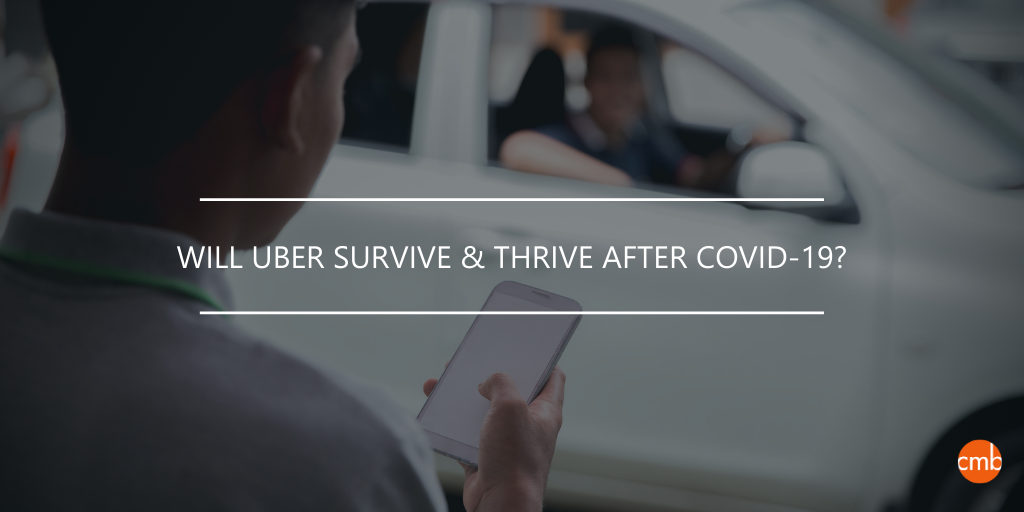It's about a 3 min. read.

I couldn’t have imagined that four years after I blogged about Uber’s evolving brand promise, we’d be debating the safety of a trip to the grocery store. The disruption wrought by COVID-19 has only accelerated that by advancing technology, socio-economic change, and evolving consumer needs. So how will Uber and other disruptive tech-driven brands face the challenge of how it best fits in consumers’ lives today? With so much in flux, we do know this: a deep understanding of consumer motivations is critical to successfully innovating amid disruption.
At CMB, we use our proprietary BrandFxSM framework to help brands uncover threats and opportunities brought about by disruption. We know that when brands help people fulfill people’s core needs by delivering on Functional, Social, Emotional, and Identity they drive trial, use, and advocacy—this is true whether or not their lives are upended by a pandemic!
For example, we know that a failure to help passengers feel safe and secure was a barrier for the ride-sharing industry early on and was subsequently addressed after both Uber and Lyft took action (e.g., evolved rating system, license plate confirmation). Today’s safety concerns look a lot different than 4 years ago—the fear of a fellow passenger’s aerosols may be more top-of-mind than the fear of an ill-intentioned driver. Keeping a pulse on consumers evolving needs during this extraordinary time will help Uber deliver what consumers need to consider or continue ride sharing. Uber should ask themselves:
Having the right tools in place to successfully deliver those benefits is also crucial. Contact-free tech such as autonomous vehicles has resurfaced as a major opportunity. As we’ve reported in our research, fear has been a major barrier to adoption, but in a world where health anxiety is at an all-time high, we expect to see chasms crossed in record time (think about how much time you spent on Zoom before March)!
Additionally, pivoting areas of focus with acquisitions and partners is a winning strategy for innovative brands. Partnerships allow companies to tap into centers of excellence and provide faster routes to market and/or greater market share. Uber’s purchase of Postmates is a good example of how the brand is investing in partnerships that reflect changing needs. In another change since 2016, if you go to Uber.com, Uber Eats has a prominent space on the home page. Understanding the broader context of Uber’s core mission – setting the world in motion – we understand how this pivot allows Uber to leverage its core competencies with the desired benefits the marketplace seeks (a night of not cooking when date night means staying in).
Disruption and uncertainty aren’t going away but neither are the core drivers of consumer decision-making. Brands that don’t merely survive but thrive amid this disruption will be the ones that use a deep understanding of what truly drives people and combines it with agility and the will to innovate and develop meaningful partnerships.